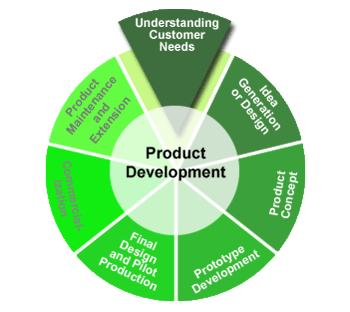

|
Design and Product Development |
Copyright 2006
Cornell
University.
All rights reserved.
|
The first thing to consider in product development is what your customer wants.
It is important to identify NEEDS that potential customers may not even know they have. Who thought 20 years ago that we would be wearing sandals that can be worn in water or hiking up a mountain? Or that we would wear underwear that shows through our tops? Successful product development addresses customer needs. Researching the market is the next step.
A variety of methods make thorough research easy. This research can help you determine how your product fills a gap in the market. But research cannot assure 100% success to your product. Use it as one step in your product development process. You can do the research to identify customer needs on your own or pay someone else to do it. You can also buy data from research that has already been conducted. The objective is to make certain that someone NEEDS your product and that it is different from other products being offered.
Trend reports Consumer studies Surveys and interviews should be short. Respect the time of your participants. A survey should usually be no longer than one side of one page, easy to read and understand, and quick to fill out. An interview should take no longer than a minute or two. Focus groups have the added value of discussion among the participants. As the name suggests, the discussion should be focused by the leader with a few general questions. But the participants should be allowed to wander in their thoughts so that they reveal and describe their unmet needs. It is a good idea to audio record focus group sessions so that you can listen to them many times. Focus group discussions often uncover valuable information for product development through free-form discussions. Observations are another method to evaluate consumer needs and buying habits. Watching customers interact with products similar to yours and listening to their comments can give you insights on what they value. Point-of-purchase interviews ask questions about the specific products customers are buying at that moment. Intercept studies in shopping malls can be set up to compare several products at once, often in a room off the main hallways. Shoppers are selected randomly or by their interest in similar products on their current shopping trip. Market competition Relationship between customer needs and your product
|
 Understanding Customer Needs
Understanding Customer Needs
